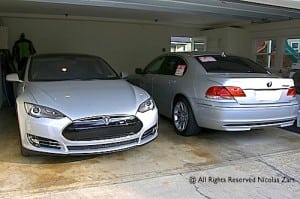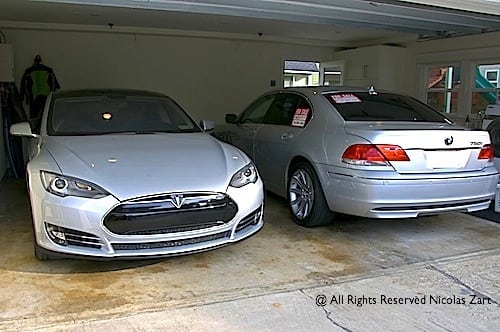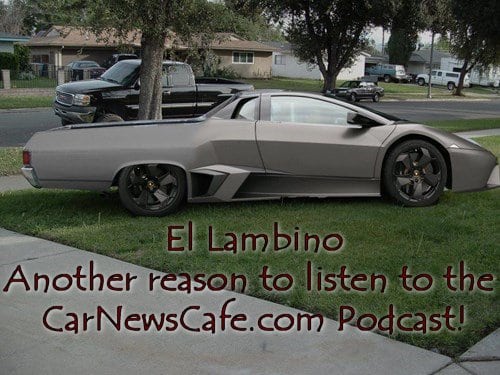
Electric cars still have a lot to prove in the consumer’s mind, despite increasing demands for luxury and lower prices. So should electric cars load the extra weight with “luxury items” and leather seats?
The term “luxury’ is overused and means little these days when sub-$20,000 cars pack leather seats and fake rosewood. Exactly when did leather seats become a sign of luxury? A little automobile history will reveal leather was never a luxury item. In fact, royalty traveled on virgin wool as evidenced on vintage and older Rolls Royce and Bentley cars. The front seat for the driver exposed to the elements was made out of leather. Royalty would not have sat on a slaughtered cow. The meat industry found another profit stream by selling its dead cow skins to carmakers.
The EV Luxury Conundrum. When it comes to electric cars, weight is the number one enemy. The ideal electric car should be light and powerful, which gives you better potential range. After all, Colin Chapman revolutionized the racing world when he introduced light cars that handled better and used less energy. It’s a wonder why anyone would slap on heavy leather seats, taking away precious energy from a car’s range. A quick trip down memory lane will show you how the original AC Propulsion tzero was a battery box on wheels with two rudimentary seats. Eberhardt and Musk wanted to create a more road worthy car, which entailed a DOE-approved windshield and other creature comfort features. This eventually led to the incredible little Tesla Roadster.
Connected Devices And Limited Onboard Energy. If you are frustrated with the slow pace of development in the electric car world, you are not alone but you are also part of the problem. Carmakers have a weighty dilemma on their drawing boards. How do you develop an electric car that is light and has enough range when even entry buyers expect so-called luxury features? Add on top of this dilemma the myriad of connected devices and infotainment systems that demand ever more energy and you can start to see the bigger picture. It’s a thorny problem, but something buyers can wrap their heads around by not asking for champagne at beer price. In other words, if 90% of the US daily commute is 40 miles or less, what matter a car with 500 miles for that occasional trip over 200 miles? It would be better and far cheaper to rent a car for such occasion while keeping your smaller range vehicle for your daily needs, devoid of leather and other heavy features.
Move Over Rover, There’s Something Leaner Than Leather. I want to clarify that I’m not an anti-leather crusader. Animal cruelty apart, leather is heavy and not particularly the best choice for a car. Race cars don’t have leather seats anymore. We have much better alternatives that are cheaper, lighter and definitely more sustainable. Strangely enough, we live in a modern world that insists on using ancient and often time outdated materials. Houses made out of wood might be OK for earthquakes, but reinforced concrete works better. Newer materials are available that are lighter and more sustainable than leather or concrete. Some of these fabrics mimic leather so well, they will fool most people. By asking carmakers to offer alternative to leather, you are sending a clear message across. And anyway, who likes to freeze their bums on leather in the winter and sweat in the summer? Sure, we can air condition and warm seats appropriately, but this is yet again another taxing drain on our limited battery pack energy.
As the years roll by we begin to see performance upgrades with longer range and better. What a shame we slow down the process with heavy and energy intensive features. It might be easy to blame everything on carmakers, since after all they created much demand that didn’t exist in the first place, but it would be a good time to ask for what we need and spend our money on raising performance, not weighing it down.







